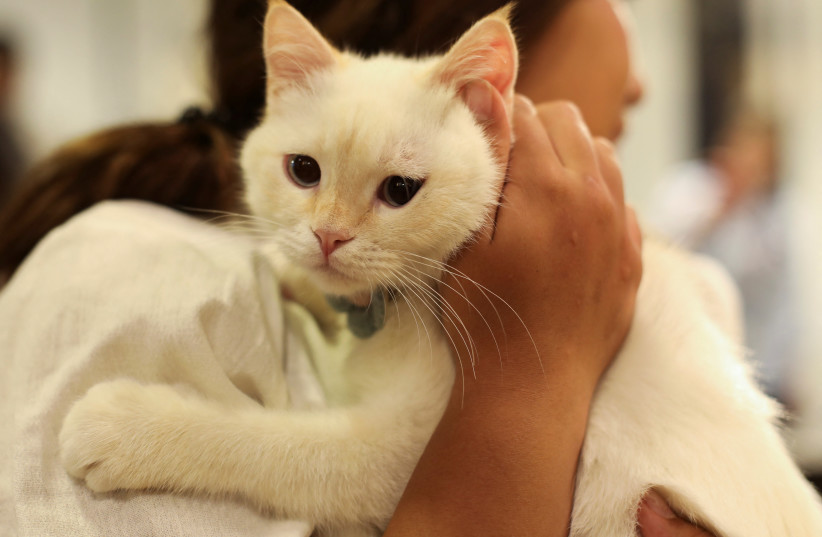A new computer simulation of the noses of domestic cats suggests that the convoluted nasal structures involved in their sense of smell function like coiled gas chromatographs – lab equipment used for highly efficient analysis of the chemical makeup of substances.
Dr. Zhenxing Wu of the Ohio State University and colleagues have found the secret to felines’ finesse at sniffing out food, friends and foes.
They have just presented these findings in the journal PLOS Computational Biology.
Vertebrates use their noses for both breathing and smelling, with receptors inside the nose detecting odors in inhaled air. Some previous studies suggest that odor detection in vertebrates may function similarly to basic gas chromatography, in which, essentially, the substance being analyzed is vaporized and carried by a steady flow of gas through a tube.
Different chemical components of the substance interact with the tube in distinct ways along its length, enabling the identification of each component.

Parallels between gas chromatography and nose function have already been observed in amphibians, but few studies have examined these parallels for mammalian noses, which have more convoluted channels through which air passes to enable odor detection.
Wu and his team developed an anatomically accurate three-dimensional computational model of the nose of a domestic cat using a variety of techniques, including high-resolution micro-CT scans of an actual cat’s nose and computational fluid dynamics modeling.
Simulation of air and odor flow through the virtual cat nose showed that it appears to function similarly to a parallel coiled gas chromatograph – in other words, if a cat’s nose only had one straight tube for odor detection. It would need to be longer than the physical size of the head allows for odor detection to be as efficient as it actually appears to be. Having multiple complex channels appears to be 100 times more efficient than having a single straight tube—which most amphibians have.
Findings deepen understanding of mammal's enhanced sense of smell
The authors said that their findings deepen their understanding of how the evolution of more convoluted channels enabled mammals’ - especially cats’ - enhanced sense of smell. “The evolutionary occurrence of the convoluted olfactory turbinate channels in mammalian noses, remarkably resembles a different sensory organ, the snail-like coiled cochlea that is also unique to mammals. In birds and other non-mammalian vertebrates, the inner hearing organ, despite being called ‘cochlea,’ is instead a blind-ended tube.
“While we know that the evolution of mammalian cochlea enhances our hearing sensitivity and frequency range, we believe here that the mammalian ‘olfactory cochlea’ may similarly enhance the sense of smell by serving as a parallel coiled chromatograph. The finding reveals novel mechanisms to support high olfactory performance, furthering our understanding of the successful adaptation of mammalian species, including cat – an important pet – to diverse environments.”
“It’s a good design if you think about it,” said otolaryngology Prof. Kai Zhao and a senior author of the study. “For mammals, olfaction is very important in finding prey, identifying danger, finding food sources and tracking the environment. In fact, a dog can take a sniff and know what has passed through – was it a friend or not?” he said.
“That’s an amazing olfactory system – and I think potentially there have been different ways to evolve to enhance that.
